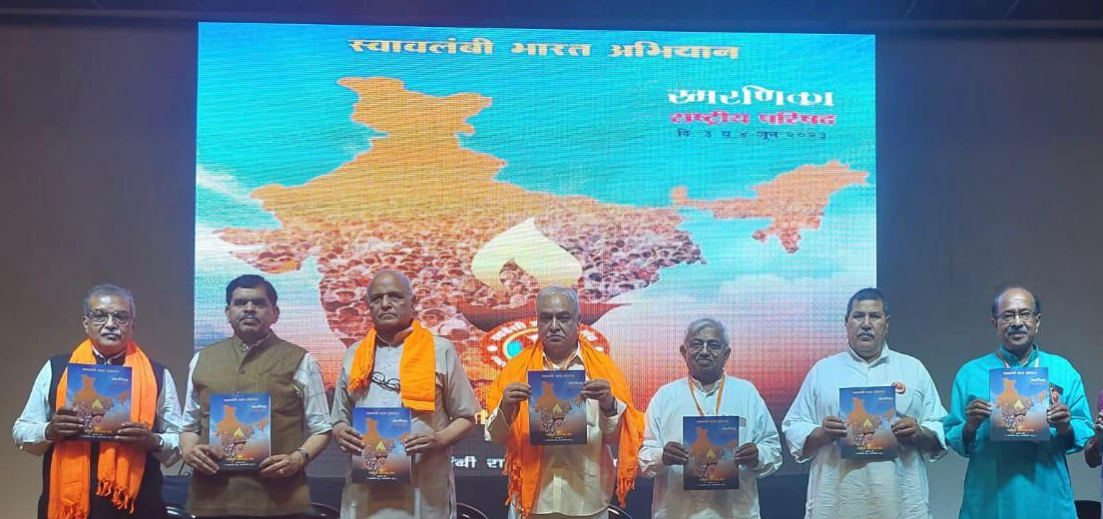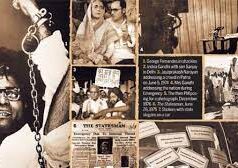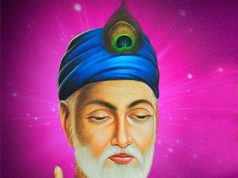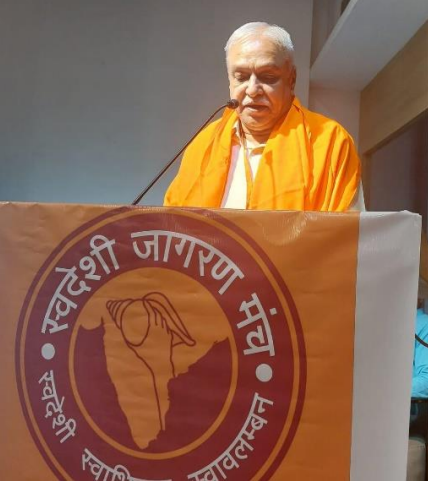
I welcome you all here in Pune – the city home to more than 250 ancient temples including Maa Parvati temple built by the Maratha Emperor Chhatrapati Shivaji Maharaj, the founder of Hindavi Swaraj. In the 18th century, when India’s share in world GDP was more than 16%, there were 143 families from Pune alone who earned fame in economic, military and political activities, Even today there are thousands of such families and business communities in our country who have been champions of entrepreneurship for hundreds of years/millennia. Social reform work, cultural activities or intense nationalism, Pune is center of all these. Saint Tukaram, Mahatma Jyotirao Phule, Savitri Bai Phule, Gopal Ganesh Aagarkar, Tarabai Shinde, Dhonde Keshav Karve are always remembered. Be it the Mughals or the British, this land of Pune has also been the center of struggle with them. Veer Saavarkar burnt Holi of foreign goods here. Who can forget the incredible contribution of freedom fighters like Bal Gangadhar Tilak or Gopal Krishna Gokhale, the torch bearers of Swadeshi. Today Pune is one of the biggest IT hubs of the country. It is also known as the Oxford of the East because of its many renowned institutions of higher education. Pune is also one of the fastest growing centers in South Asia.
I also have a personal emotional attachment with Pune. On May 1, 1994, in the presence of ShriDattopant Thengadi ji, Shri K.C. Sudarshan ji and Shri Madan Das Devi ji, Mr. P. Murali Dhar Rao had given me the responsibility of Tamil Nadu State Convenor in Pune itself. Moreover when the whole world was trapped in Corona crisis, Pune’s Serum Institute gave life to the people of India and all over the world by giving Swadeshi vaccine to India. I bow down to this holy land.
Friends, since time immemorial calamities like Covid have plagued the world. The entire world came to a standstill and Swadeshi Jagran Manch was no different. But very soon all of us gathered ourselves together and not only resumed our activities but also touched new milestones at an unprecedented pace. During this phase we made many revolutionary changes in our working style. I would like to highlight a few here:-
1. Launched on May 25, 2020, under the Swadeshi Swavalamban Abhiyan, we reached 714 districts of the country through digital mediums. 13,35,363 citizens participated in this campaign and their signatures were obtained in support. Apart from this, 46,250 citizens registered themselves as Swadeshi volunteers in this campaign. Vichar Parivar and other organizations together carried forward this campaign for several days on behalf of their respective organizations.
2. Patent Waiver Campaign” was launched worldwide to make the Corona vaccine available to all. In India, 14,68,350 citizens signed a petition addressed to the World Health Organization in support of this campaign. 15,226 citizens from over 20 countries and more than 2200 very dignified and important persons of India also signed. On the day of World Health Organisation’s meeting on this issue, demonstrations were organized by writing slogans in support of patent waiver at hundreds of places in twenty countries and thousands of places in India.
3. Programs were organized to felicitate 2755 entrepreneurs who took care of their employees, supported and did not retrench them during the Corona period all over India.
4. Entrepreneurship promotion programs and seminars were organized in more than 100 universities and higher educational institutions.
5. During the pandemic, there was a sudden and huge decline in the GDP of the world within a short span of 10-15 days. Workers/Labourers migrated back to their native place all over the world. Even in America, the world’s largest economy, there were riots in 100 cities and curfew had to be clamped in 25 cities. Due to this the hollowness of the present model of Globalisation based on centralisation of economy was exposed to the world. We organized a three-day “Arth Chintan” program on the topic “Sustainable Development with Inclusive Growth for Optimizing Employment and Eliminating Poverty” with intellectuals, policy makers, economists, industrialists, social workers and politicians from across the country for the new alternative economy and world order. Thirty different prominent speakers participated in it. Thousands of intellectuals and karykartas participated in this digitally at hundreds of places across the country. An association of 800 universities of the country became the co-organizer of this program. The gist of the speakers speeches was published and circulated.
6. A campaign was taken to raise funds for the construction of Swadeshi Shodh Sansthan building at New Delhi.
7. When GDP had fallen in every sector in India, only the agriculture sector registered growth. “Bhoomi Suposhan Abhiyan lasted for 52 days on the issue of deteriorating soil health, agricultural land getting barren and organic farming. Based on extensive research its literature was prepared, distributed and publicized. The Bharatiya Nav Varsh (Bhoomi UdbhavDivas) on April 13, 2021 was celebrated as “Bhumi Pujan Divas” at more than 1800 places by Swadeshi Jagran Manch and extensive public awareness created by worshiping the land with extensive involvement of the locals. The hashtag campaign trended on Twitter on this day.
8. The functioning of Swadeshi Jagran Manch has been transformed keeping in mind the current day and age. Today our Arth Sangrah has been made “Paperless and Cashless”. 9. Apart from this, many programs have also been organized and are going on under the Swavalambi Bharat Abhiyan.
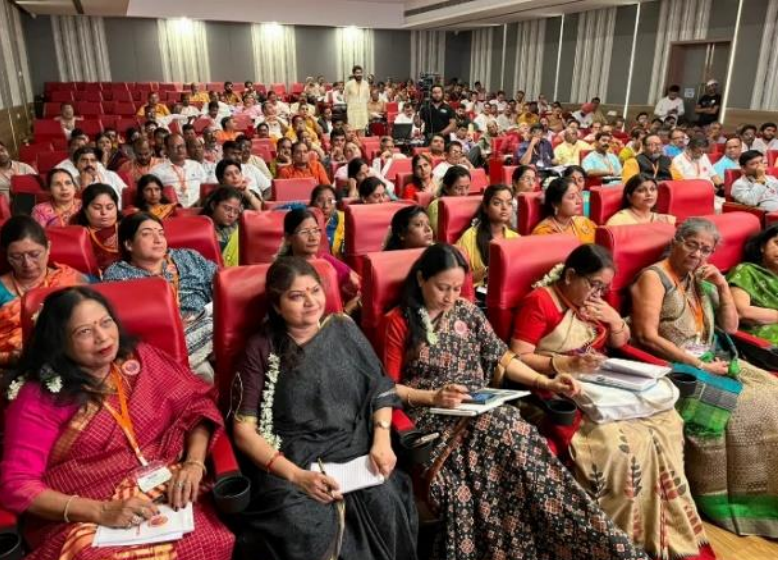
As a result of all these campaigns, where we stand today, we can say with humble pride that:-
1. We have expanded geographically.
2. We have expanded organizationally. Our units are working in 620 districts of 40 States.
3. Our relevance and acceptance got priority in the Vichar parivar. After decades, a resolution on economic issues was passed and a comprehensive plan for a Abhiyan was prepared for its implementation. Various organizations of Vichar parivar entrusted the responsibility of coordination of this Abhiyan to Swadeshi Jagran Manch. On various occasions, Parampujya Sarsanghchalak ji, Honourable Sarkaryavah ji and Honorable former Sarkaryavah ji publicly appreciated our work and participated in our programs.
4. Rapid progress is being made in both the construction work of the Swadeshi Shodh Sansthan Building in New Delhi and the policy research work of its 13 verticals. Many research publications are published during this period.
5. With the participation of 68 learned speakers, 7 Vice Chancellors, 2 Union Ministers, 2 Honorable Sah-Sarkaryavah ji, 1 Honorable Former Sah-Sarkaryavah ji, Organising Secretaries of 14 organizations, eminent lyricist Mr. Kailash Kher, 1350 delegates from 15 provinces in 9 sessions, the three- day national workshop held in Delhi was a milestone in the Swavlambi Bharat Abhiyan.
6. Our social media and digital reach has increased through multiple means including MySBA web portal, MySBA app, Facebook, Twitter etc.
7. Rojgar Srijan Kendras have been opened in 452 districts and work/training of karykartas is in progress to make those centers systemic and in working order.
Because of all these, today the nation is looking up to us with hope. It can also be mentioned as, that the nation is looking up to us with hope, which is why we have been able to reach this level today.
Swadeshi Jagran Manch has completed 30 years since its formation. In these 30 years, many economic political, diplomatic changes have taken place in India and all over the world. The coming time is of more rapid changes. Naturally, changes bring with them challenges and also immense opportunities. We not only have to sense these opportunities but also take advantage of them.
We have to do deep introspection. Re-set our priorities according to the changing circumstances. What hope does the country have from us? What are the challenges and opportunities before the country? In the light of all this we will work in the present. This will be the way forward.
In the 20th century, the world faced many challenges like Spanish flu, two world wars, post-war great depression, mechanization, collapse of communism, other regional conflicts, East Asian crisis, globalization. In the context of India, these challenges were bigger in view of partition, integration of princely states, food crisis, balance of payment crisis, unstable governments, poverty, social unrests etc.
This century started with the IT revolution. The global recession of 2008 had hit in the first decade, severely affecting the economy and employment. In the second decade, trade war among countries, incidents of taper tantrum & trade tension between super powers, economic upheaval in Europe and consequent separation of Britain from European Union, migration of production lines from China, Global GDP reduction and production/supply chain stalled due to Corona, Digital revolution and other challenges.
In this third decade first challenge was the Covid 19 pandemic notified by the WHO in January 2020, that hit the global growth. Two years later, as the global economy was recovering from the pandemic induced output contraction, the Russia Ukraine conflict broke out in February 2022, triggering a swing in commodity prices and, thus, accelerating existing inflationary pressures. This posed the second challenge. Soon after, the third challenge emerged when nations undertook monetary tightening to reign in inflation, causing growth to weaken. Monetary tightening also drove capital flows to safe haven US markets, contributed to rising sovereign bond yields, and depreciation of most currencies against the US dollar. The consequent increase in borrowing costs also stressed high levels of public and private debt, threatening the financial system. Faced with the prospects of global stagflation, nations, feeling compelled to protect their respective economic space, slowed cross- border trade, which posed the fourth challenge to growth. All along, the fifth challenge was festering as China experienced a considerable slowdown induced by its policies. The sixth medium-term challenge to growth was seen in the scarring from the pandemic brought in by the loss of education and income earning opportunities. A simultaneous occurrence of several challenges to growth is perhaps unprecedented.
India has faced these extraordinary challenges in a much better way than many other countries of the world. Some countries are still struggling and some countries reached to their pre Covid situation. On the other hand, India has emerged “Anti Fragile” and flourishing with more energy, strength and progress.
Aatm Nirbhar Bharat proved to be a revolutionary step in the direction of Swadeshi. Indigenization of defence production, ONDC, UPI Payment System, 5G Technology, Swadeshi vaccine, 250 Crore vaccination, 10 lac Startups, Jan Dhan accounts, Digital identity to 99 percent population through Aadhaar, promotion of Swadeshi tourism and Khadi, growth in swadeshi toy industry, nano fertilizer, repeated calls for Vocal for Local are few examples.
According to the new population report released by the United Nations, India has become the most populous country in the world (142.85 crore). Out of this, 25 percent of the population is in the age group of less than 25 years. The working population of 25 years to 60 years is about 100 crores. The rest of the population is aged. Regarding the population report of India, the western media is raising apprehensions that how India will be able to take care of such a large population.
Such apprehension was expressed by Churchill before independence and was also expressed in the decade of 1960s. But those apprehensions proved to be baseless. India is a democratic country with a stable government and has sufficient food reserves. Similarly, the apprehensions of the western media this time, regarding population and that overpopulation is a burden that hinders development will be disproven by India.
Population having a major share of young population is a power, an opportunity. We have the pride of being the youngest country in the world. Young people are not only energetic, talented and willing to work, but also provide a huge market due to the fulfillment of their needs and hobbies. Apart from this, they also save for the future. This saving leads to capital formation in the country. This capital formation meets the needs of domestic investment.
But we will not have this demographic dividend of being the world’s largest young country forever. This golden opportunity is going to remain with us only till Amritkaal, the year 2045. Yes, if we take advantage of this opportunity in these twenty-two years, then we can set up a mechanism in every village and small cities of India to achieve long-term prosperity.
The world is getting disillusioned with globalization and is getting increasingly tired of today’s aggressive violent globalization. The days of both communism and capitalism are over. Countries of the world towards are trashing them. The world is moving Re-Globalization, Deglobalization, Globalization, Restricted Decentralized Globalization, De Population, De-growth, Dedollarization, Decoupling with China etc. China has become the biggest credit providing country of the world. The world is understanding the debt trap of China and is gradually turning away from Chinese debt.
What should be the way forward in all these situations? The same which we have been advocating for the last thirty years. The path of Vasudhaiva Kutumbakam and Sarve Bhavantu Sukhinah based on the eternal vision of India. Based on this is the development model of “Anaadi se Anant”. Sustainable development, inclusive development and shared prosperity, Whose age-appropriate interpretation was done by Pandit Deen Dayal Upadhyay ji in Integral Humanism and later by Dattopant Thengadi ji in “Third Way”.
According to the World Trade Organization, the growth rate of the world economy will be only one percent in the year 2023. That means the global demand for goods and services is shrinking worldwide. On the contrary, there is a huge demand for goods and services in India, but there is not enough production to meet this demand. This gap in demand and supply makes us import dependent. While the world faces a demand constraint our country is facing a supply constraint. We have to change this situation by setting up a production mechanism to meet India’s demand.
In India, labour migrates where there is capital, due to which on one hand our villages are being robbed off their young population who, on the other hand, live in hellish conditions in cities. With movement of capital where there is labor and land available, we can reverse this situation.
Technology decentralised various economic activities. Apart from this, L.I.T., LL.M. and thousands of youth graduates of many top educational institutions are doing successful experiments at their hometowns, different places and villages at their own behest. As a result, revolutionary changes have taken place in those places. Zoho Corporation operating from a small village in Tamil Nadu is an example of this. We have to take advantage of such examples by coordinating, communicating, cooperating.
India’s IT sector which is worth 225 billion dollars. Through talented youth, we can easily take it to 1,000 billion dollars (one trillion dollar). This work can be done in small cities, towns and villages.
Apart from this, there are many other areas including organic agriculture, food processing units, dairy industry, poultry industry, village industry etc, where we can take a big leap.
The assumption about India is not correct that it does not have its own domestic capital for investment. Due to which we have to depend on foreign capital. The reality is that India’s own annual domestic savings are $475 billion, add to this the amount of gold bought by Indians as investment, this amount reaches $950 billion annually. Thousands of tonnes of gold reserves are with the country and the society. Apart from this, Indians invest heavily in other ways as well.
In India, 5 percent of the population is extremely rich. Apart from this, there are more than 30 million overseas Indians spread across the world. They have sufficient capital. 65 percent of the population, mostly youth and middle class, have immense potential to enhance their efficiency, skill and productivity. On the strength of all these, the standard of living of the remaining 25 percent population has to be uplifted. This is our need.
Thousands of social, religious, service organizations are working in the country. Many economist groups and social thinkers are working out of their own motivation and with their own resources. They are willing to know, understand and cooperate with the broader vision, thoughts and development perspectives of our Vichar Parivar. We have to reach out to them. Here I would like to quote respected Dattopant Thengdi ji. We have to do a “Talent Hunt”. We also have to create such an ecosystem that both of us can work together. Along with this we have to show flexible strategic skills like Yogiraj Shri Krishna.
The challenge before us is livelihood and employment. There is a belief in the world that if the economic growth rate increases (Mass Production) then employment will increase. We have to change this perception by reestablishing the principle of employment generated (Production by masses) economic growth. The world is experiencing jobless economic growth.
India has never been a market driven or state driven economy. It has been a society driven economy. Whenever an opportunity or a challenge comes, the society stands united. There is immense potential for economic progress in India. Our intellect and geographical conditions further enhances these possibilities. On the other hand, except China, other countries are under heavy economic pressure. The cancellation of the Quad meeting held in Australia by the US President and leaving for US confirms this pressure.
The future belongs to India. We have to create such an ecosystem that our very affluent NRIs and the country’s 5 percent of the extremely rich population should be economically nationalist and invest here. They set up their ventures here. Their capital has to be taken where there is availability of land and labour. Our challenge is to increase the productivity of 65 percent of our population. The share of less capital more labor intensive manufacturing has to reach 30 per cent of GDP.
Nearest markets are to be used so as to reduce the transportation cost and time. Research and development has to be increased from 0.6 percent to 5 percent of GDP. The top ten IT companies of the country spend only one percent on their research and development, we have to increase this. One district has to be made one critical technology hub. Use of local goods has to be increased. In the coming times, the income of small cities will increase in comparison with the 8 major metropolitan cities of the country. So the investment has to reach there. And on the basis of the prosperity, achieved on the basis of all these, the living standard of the rest 25 percent population standing at the last has to be uplifted.
Decentralization will be the main “Mantra” of our focus. Lakhs of karykartas of Swawlambi Bharat Abhiyan will become the “Tantra” and Rojgar Srijan Kendra’s spread across the country will become “Yantra” for this.
We will move forward by taking inspiration from the trinity Brahma, Vishnu, Mahesh. Taking inspiration From lord Mahadev we will discard what has become old and irrelevant. Taking inspiration from Brahma ji, we will create for the future and taking inspiration from Lord Vishnu, we will work in the present and for the future. We will transition to being age appropriate for Paradigm Shift.
In the light of all these all of us together will collectively “Think-Discuss-Contemplate” on various topics in these two days and take decisions for future plans.
